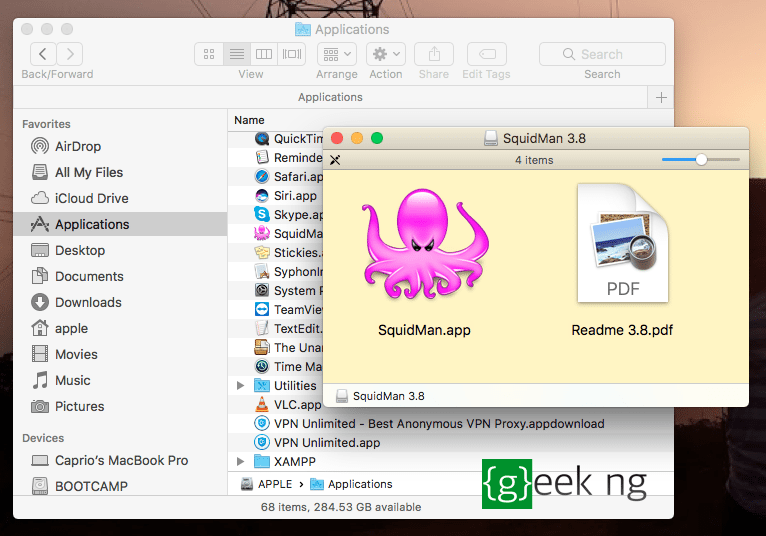Now and then, you may be required to tweak proxy settings on any device, be it Mac, Linux, or Windows. So, did you ever realize the need to change the proxy settings on your MacBook as well? If yes, then this post might help you. We have covered a step by step guide on configuring proxy on Mac in the quickest and simplest way possible.
Enter proxy server settings on Mac. If your computer is connected to a local network that’s protected from the internet by a firewall, you may need to specify proxy servers or use the FTP passive mode (PASV) to access some internet sites. Mac SOCKS Server Panel. And now all your applications that are using the setting in the control panel will be able to use the VPN session, just don’t shut down the Terminal window, that is where the magic is happening! Using SSH as a Secure HTTP Proxy. Firefox on Mac uses the Mac system settings to configure the proxy server. This is how you open it. Click on the Firefox menu and then select Preferences. Now scroll down till you see the Network.


Also Read: How To Watch Youtube Videos Blocked In Your Country
How to Tweak Proxy Server Settings on Mac
Let’s get started.
Why Do you Need a Proxy?
A proxy server stands as a firewall between you and the Internet to ensure privacy. In general cases, a proxy server is used to bypass the network traffic. So, when you use a proxy server, all the applications and websites re-route the network traffic to a different channel, rather than sending it to the actual destination.
One of the most common reasons why most users might feel the urge to use a proxy server is to watch geo-restricted content, including movies and TV shows that are not available in your region. With the help of a proxy server, you can bypass the network traffic to a proxy server and easily access media content, which is not available in your country.
Also Read: How to Access Blocked Sites Without Using Proxies or VPNs
How to Configure Proxy on Mac?
Every browser has its settings to customize the proxy server, including Safari, Chrome, and Firefox. Follow these quick steps to configure Mac’s proxy by making a few quick changes in the default system settings.
Tap the Apple menu icon in the top-left corner and select “System Preferences.” Tap on “Network.”
In the Network settings window, select the network connection or simply the WiFi network name you’re currently connected to.
Use Proxy For Mac Download
After selecting the network name, tap on the “Advanced” button placed on the window’s bottom-right corner.
In Advanced settings, switch to the “Proxies” tab.
Mac Proxy Setting
macOS offers you different alternatives to manage proxy server settings. For example, If you check on the “Auto Proxy Discovery” option, your system will automatically detect a random proxy server and connect your device.
The second option is the “Automatic Proxy Configuration,” which you can use to enter a proxy address manually in the form of a .PAC (Proxy Auto Configuration) file. To use this option, you simply have to enter the address of the.PAC file in the URL box. You will also have to enter a user ID and password for the proxy server.
The third option that you see on the list is the “Web Proxy (HTTP).” By checking on this particular option, you will manually enter a URL address of a proxy server.

Once done, don’t forget to hit the “Apply” button to save your recent changes.
Also, if you have entered an invalid URL, the webpage won’t load, and you will see the following message displayed on the browser window.
To resolve this, you might have to re-configure the proxy settings on your Mac or simply enter a valid proxy server address to redirect network traffic.

Download Systweak Anti-malware to Protect your Device
Looking forward to enhancing security on your Mac? Download the Systweak Anti-malware tool to strengthen the security on your Mac devices. This nifty tool does a splendid job of protecting your device against any potential threats and vulnerabilities, including viruses, malware, adware, trojans, etc.
This wraps up our step by step guide on how to configure proxy on Mac. For any other queries or assistance, feel free to hit the comment box.
Responses

